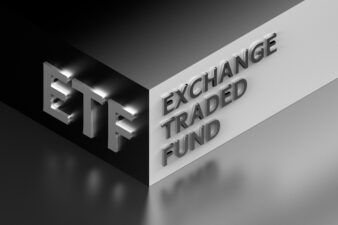For the most part, anything yielding 7% or more is avoided by income investors. The reasoning is simple: too many dividend lovers have been burned in the past from buying unsustainable yields. When a stock reaches a yield that high, usually it’s because the market is warning investors that there are some major issues.
Normally, I’d agree. Most high yields are bad news, but sometimes investors will unfairly beat up a stock that really doesn’t have much wrong with it. Or the market might think bad news is coming, even though the company shows no signs of slowing down. For an astute investor with a little appetite for risk, these sell-offs can create an interesting opportunity.
I won’t pretend that these three stocks that yield 7%+ have dividends as secure as your average 3% yielder. That’s just the nature of playing in the high-yield world. But they’re not as bad as their yields would indicate. Let’s take a closer look.
Cominar REIT
I’m convinced that Cominar Real Estate Investment Trust (TSX:CUF.UN) just has a public relations problem.
Quebec’s largest owner of retail, office, and industrial property is about as solid as REITs get. In total, it owns 563 properties and more than 45 million square feet of space mostly located in La Belle Province, but with some diversification in Atlantic Canada and the Toronto area.
Shares currently yield 7.9%, which continually perplexes me. The payout ratio is just 79%, and the company even raised its monthly dividend from $0.12 to $0.1225 last year. It also just made a big acquisition, which should add to the bottom line. And yet it has one of the highest yields of the entire TSX Composite.
Investors are concerned with Quebec’s economy, and because Cominar has a little too much debt, but, at least from my perspective, those aren’t huge concerns. Eventually, the market will clue into this stock. In the meantime, income investors can collect what looks to be a very sustainable dividend.
Dream Office REIT
According to bears, Dream Office REIT (TSX:D.UN) is a bug in search of a windshield.
The thesis goes like this. Two of Dream’s largest markets are Toronto and Calgary, which are both experiencing some problems. Office towers are sprouting up like weeds in Toronto, which is enjoying an unprecedented building boom. Calgary’s issues revolve mostly around the energy sector—weakness that hasn’t quite hit the overall economy in the region quite yet.
Those are issues, but when I look at Dream I see a company that still has an occupancy rate of above 91%, a stock with a reasonable debt load trading at 30% under book value, and a solid management team that is now fully focused on this particular REIT.
I also see a sustainable 8.4% dividend. In 2014 the company reported funds from operations of $2.84 per share, while paying out dividends of $2.26. That gives us a payout ratio of just 78%, which is in line with many competitors that yield 5-6%.
Crombie REIT
Technically, Crombie Real Estate Investment Trust (TSX:CRR.UN) only yields 6.8%, but let’s include it anyway. If they want, investors can boost the yield to 7.1% if they elect to take their dividends in the form of more shares.
After being spun off of Empire Company in 2006, Crombie has grown to be the owner of more than 17 million square feet of retail space, mostly consisting of Sobeys and Safeway stores. This lack of diversification is usually frowned upon, but the grocery business is pretty consistent. There aren’t a lot of stores closing.
Like the others, Crombie has a solid payout ratio. Funds from operations were $1.10 per share in 2014, while distributions were only $0.88 per share. That gives us a payout ratio right around 80%, comparable with the others listed.
One of the nice things about Canada’s stock market is that we have pretty some solid companies that pay generous yields. Crombie, Cominar, and Dream are hardly risk free, but all signs point towards these dividends being maintained, plus there’s potential for capital appreciation when these stocks trade at similar valuations as peers.







